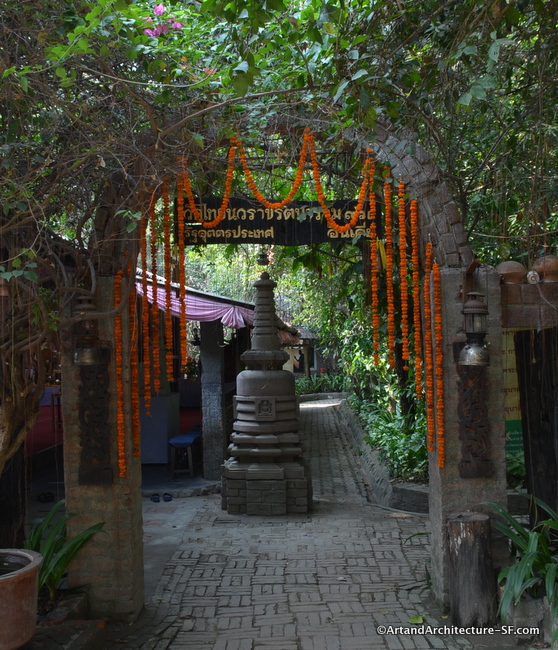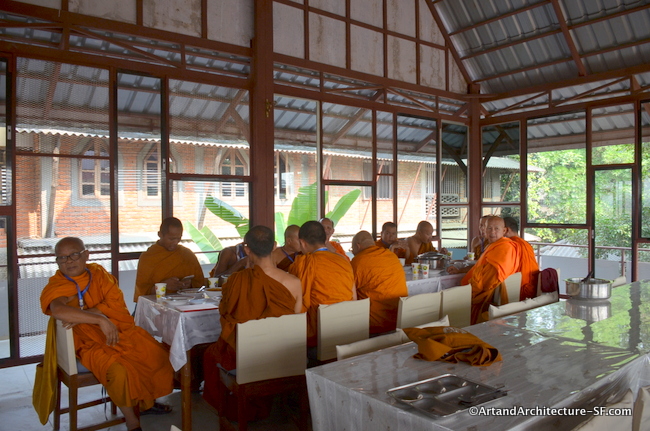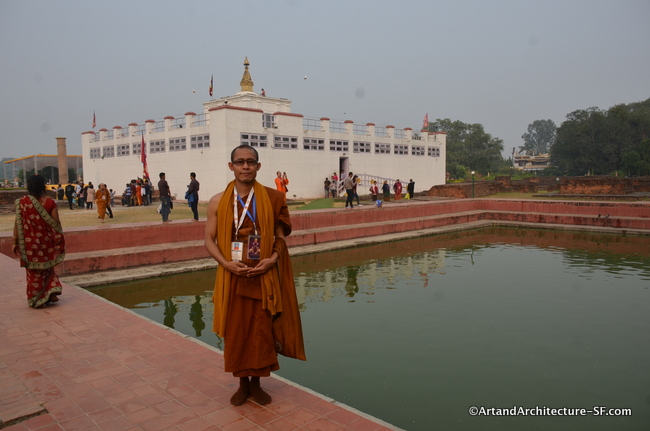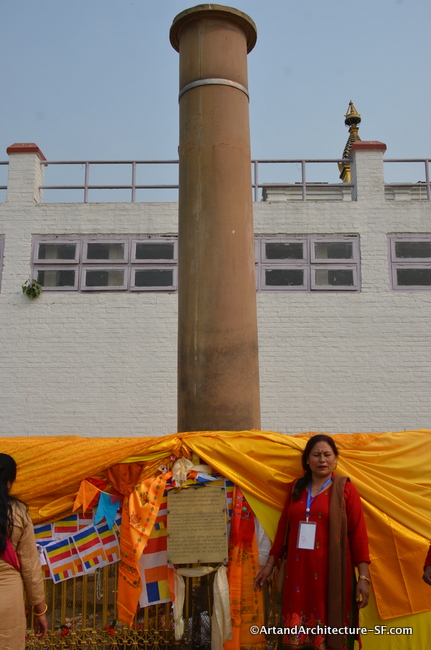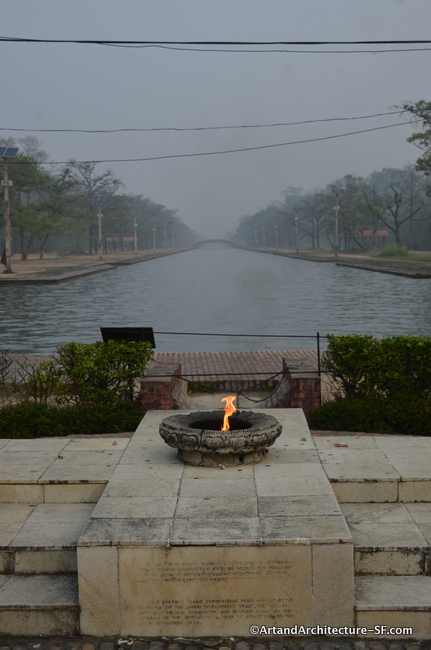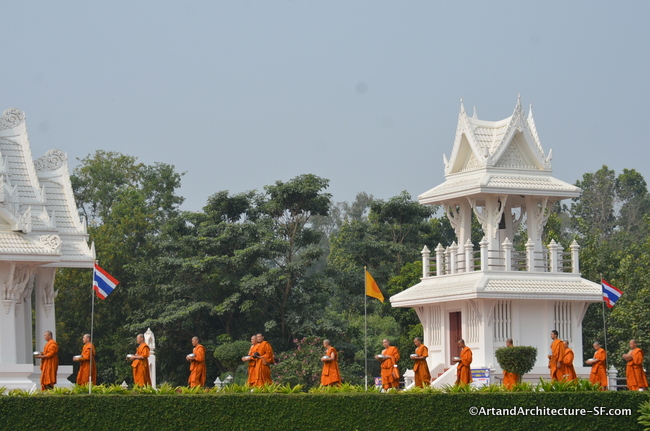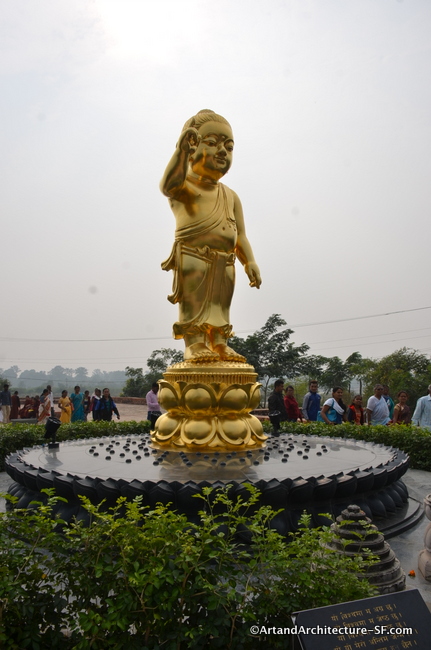November 14 to 16, 2018
Crossing the border into Nepal was an adventure. The drive from Kushinagar was a little over 4 hours. The fun part about traveling in the third world is what you encounter on the way. This time it was a train stop. I have experienced many of these, but never close enough to the front of the line to take pictures.

Notice the people hanging out of the windows and doors of the train, and the impatient walkers and drivers hugging the tracks to be the first across.
We stopped for lunch at the stunning 960 Thai Temple. This is a stop on many travelers route and it was easy to see why, the place is a quiet oasis in the middle of a zoo of traffic.
Next stop the border. You start at the Indian kiosk, and here we ran into a tad bit of trouble. There was a visa problem with a few of our travelers, but nothing a little baksheesh couldn’t fix.

Due to the size of the office, it is simply a zoo. People standing around waiting and waiting and waiting.
An instant fear of what the Nepal border is going to be like is watching the almost 2-mile long of trucks waiting to cross the border. It was later explained to me that this is not normal. The road trucks usually use was under construction. However, the way many of the drivers were settled in it must still take quite a while to get papers processed. In fact, when we crossed back over the border 4 days later, these backhoes were still in that exact same place.
The Nepalese border was no better than the Indian border regarding size and efficiency.
We knew there was going to be entry fees, all depending on what country your passport was issued from. What we did not expect is they only took American dollars.
We are here to chant at the Maya Devi Temple as part of the first Tipitaka Chanting Ceremony.
The Maya Devi Temple sits inside of a large gated and guarded Monastic Area supervised by the Lumbini Development Trust.
There is a Master Plan for the area that has some interesting rules. The one I found most unsettling is the fact that all brick used within the area must be Chinese manufactured bricks. The Chinese have begun to have quite an influence on Nepal, to the point where the nuns from Tibet that chanted at the ceremony were labeled as Canadian and the monks from Tibet that chanted were labeled as Himalayan. This was not a move made by the council, but a move demanded by the Nepalese government.

Tibetan Nuns chanting at the Maya Devi Temple. They are labeled as Canadian on the insistence of the Nepalese government, but this does not fool anyone, as their robes are very distinctly Tibetan, as is their chanting.
The Lumbini Development Trust was formed by the Government of Nepal in 1985 to implement the Lumbini Master Plan.
The jurisdiction of LDT includes the places Tilaurakot (ancient Kapilvastu) Gotihawa, Niglihawa, Sagarhawa, Sisaniyakot, Araurakot, Kudaan (Kapilvastu), Devadaha (Rupandehi), Ramgram (Nawalparasi).
The Trust receives funds from the Government of Nepal, national and international Buddhist and non-Buddhist organizations and generates internal income for administrative and development works.
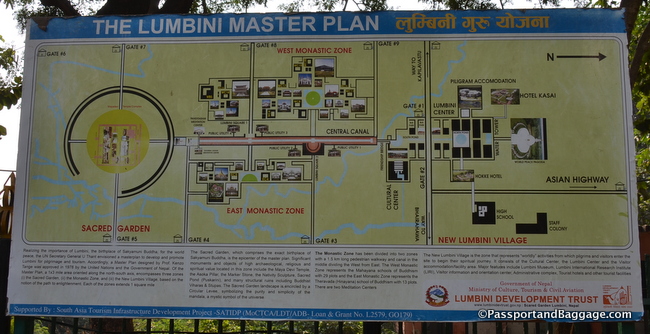 The United Nations Development Programme contributed nearly one million dollars for preparation of a Master Plan for the development of Lumbini, including numerous engineering and archaeological studies. The plan’s objective, which was completed in 1978, is to restore an area of about 3 square miles, to be known as the Lumbini Garden, centering on the garden and the Ashoka Pillar, with an additional area of 25 square miles to be developed to aid in its support.
The United Nations Development Programme contributed nearly one million dollars for preparation of a Master Plan for the development of Lumbini, including numerous engineering and archaeological studies. The plan’s objective, which was completed in 1978, is to restore an area of about 3 square miles, to be known as the Lumbini Garden, centering on the garden and the Ashoka Pillar, with an additional area of 25 square miles to be developed to aid in its support.
Within the plan for the development of Lumbini Garden, there are three main components: New Lumbini Village, The Cultural Centre/Monastic Zone, and the Sacred Garden. The entire development is tied together by a central link consisting of a walkway and a canal.
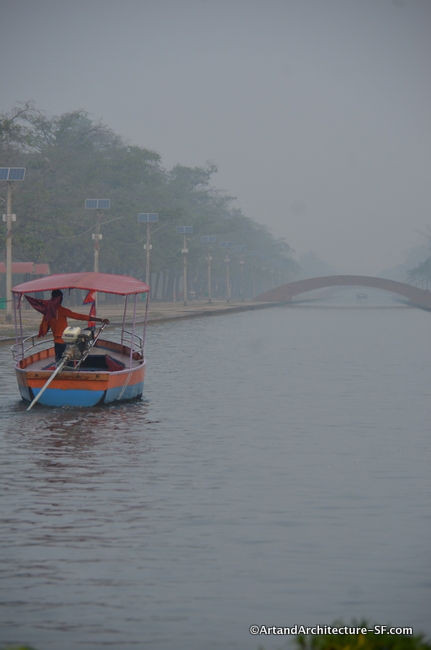
The waterway is plied with boats to ride to make getting around even easier. That is not fog, Nepal’s air is some of the dirtiest in Southeast Asia.
Within the Monastic grounds is the Royal Thai Temple. Due to the Tipitaka Chanting Ceremony, there was a special lunch for the newly initiated monks. It is considered an honor to place a small offering, in this case, a spoonful of rice, into the monk’s bowl.

Often there are lay people to serve the remaining items on the buffet table. If not the monks help themselves. Not exactly like the ancient times, but efficient.

These are Kanom Dok Jok, or Lotus Flower Cookies. They are absolutely delicious and taste a lot like a sugar ice cream cone.
It is said that Maya Devi gave birth to Siddhartha in a pond, in a standing position while holding the branch of a tree above her. The gods of the Three worlds i.e. Brahma, Vishnu & Shiva came to receive the child. As soon as Buddha was born he walked 7 steps and lotus flowers bloomed where his feet touched the earth. This is believed to be the first miracle of Buddha’s life. For this reason, everywhere you go you will find statues of the Buddha as a baby. This statue was donated by Buddhist followers from Thailand.
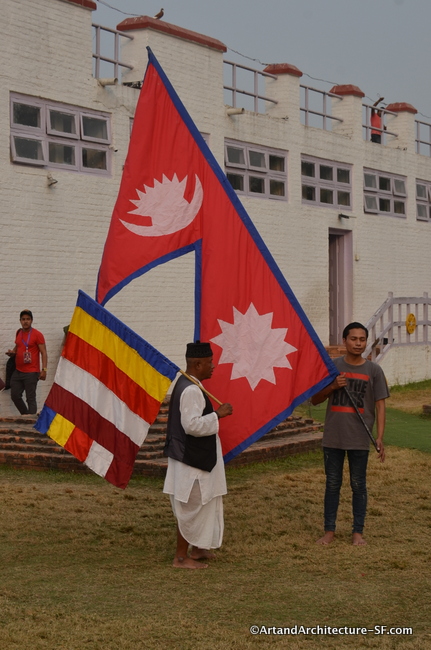
I saw these men walk around the Maya Devi Temple all day, every day, proudly carrying the Buddhist flag and the Flag of Nepal
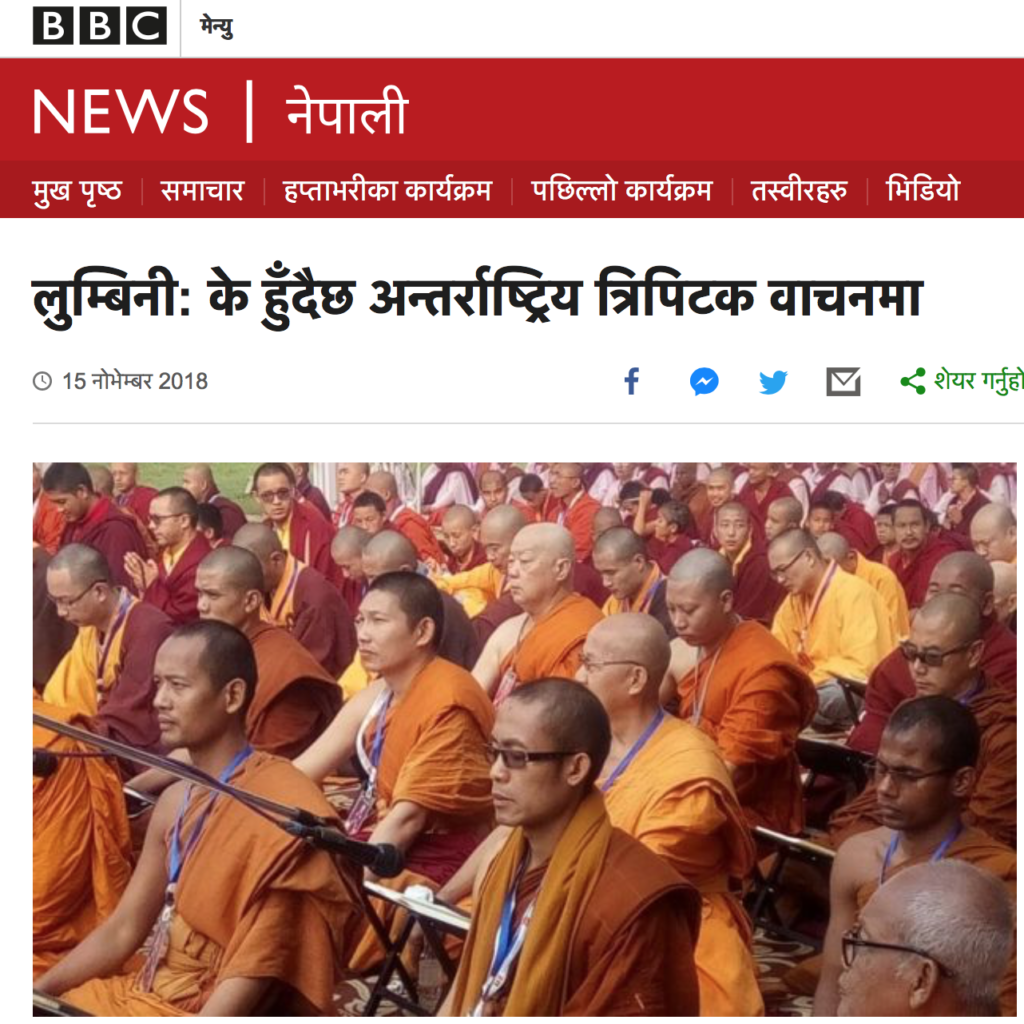
The press coverage for our event has been phenomenal. Notice Sompach, the monk I showed you above, on the front page of the Nepalese BBC publication.
More on the Temple and the in the next post.
